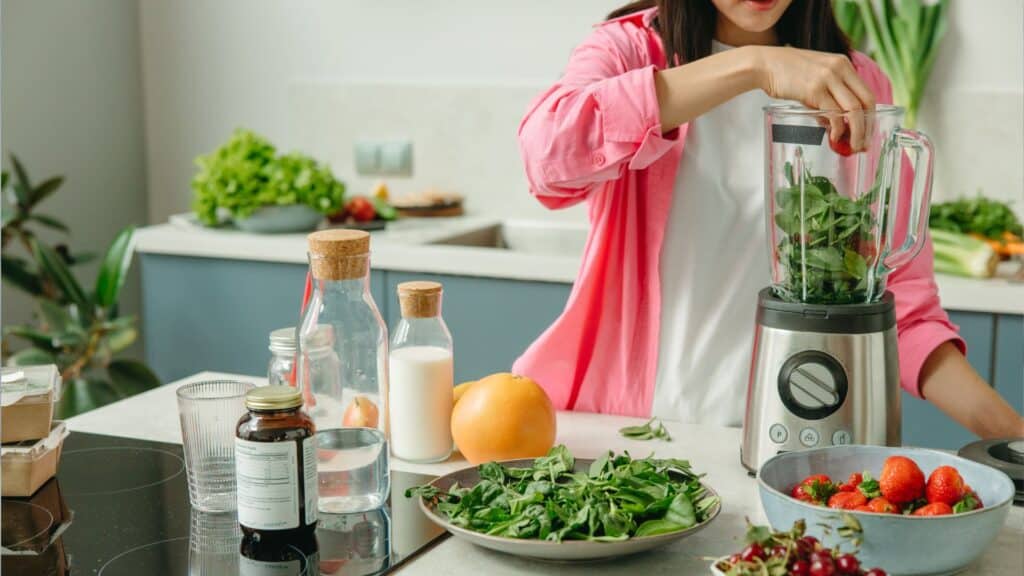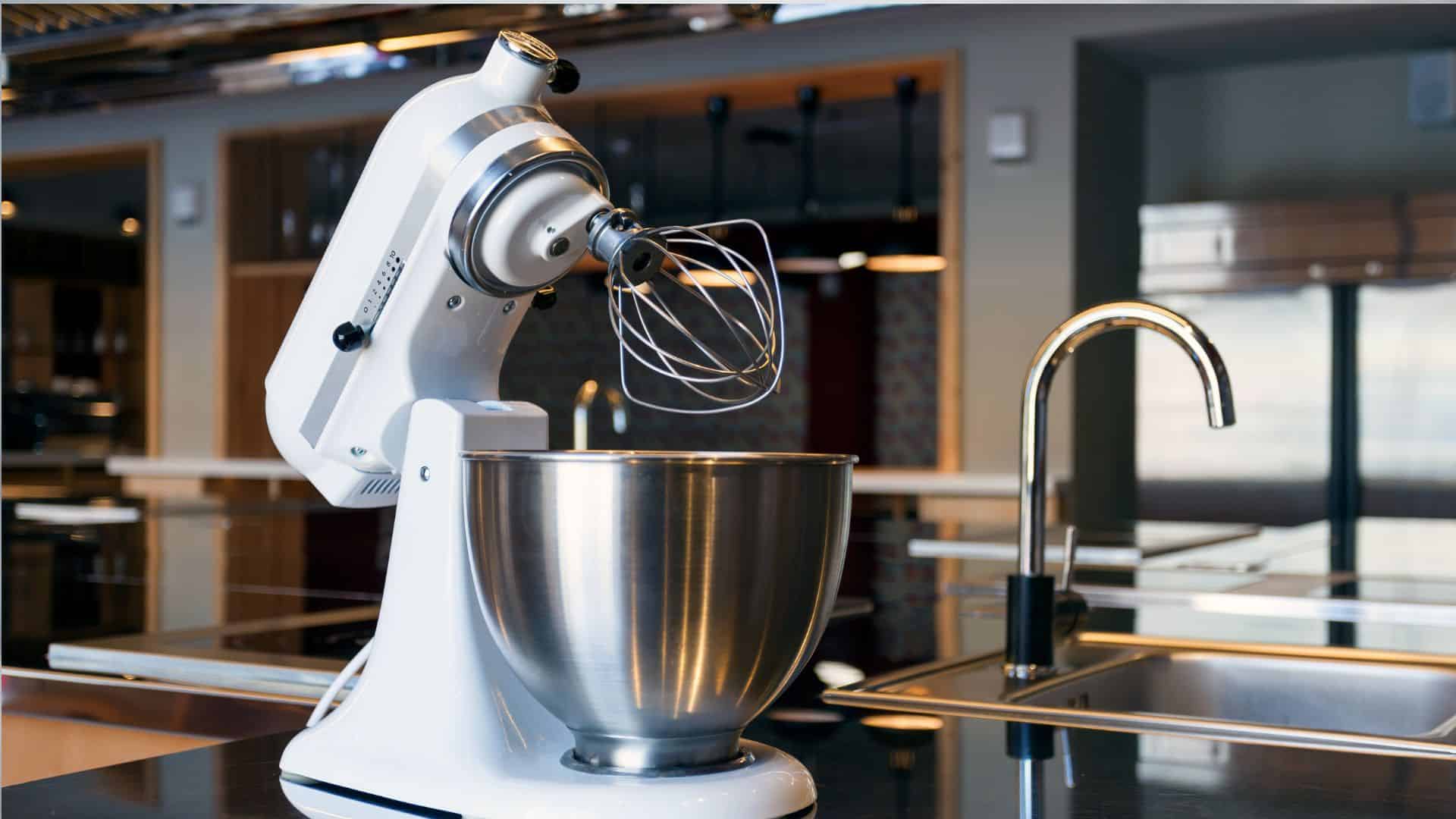In the realm of culinary tools, few appliances hold as much versatility and potential as the humble blender. From crafting smooth and refreshing smoothies to whipping up creamy soups and sauces, blenders have become indispensable companions for home cooks and culinary professionals alike.
But with an array of types and features available, navigating the world of blenders can be a daunting task. Fear not, for this comprehensive guide will equip you with the knowledge and insights to unleash the full potential of blenders, transforming your everyday culinary adventures.
Types of Blenders: Understanding Your Blending Needs
The world of blenders encompasses a diverse range of appliances, each catering to specific blending needs and culinary endeavors. Let’s delve into the primary categories of blenders:
- Personal Blenders: Compact and portable, personal blenders are ideal for creating single-serve smoothies, shakes, and protein drinks. Their smaller capacity makes them space-efficient and convenient for on-the-go use.
- Standard Blenders: Versatile and powerful, standard blenders are the workhorses of the kitchen, capable of handling a wide variety of blending tasks. They excel at making smoothies, soups, sauces, and even crushing ice.
- High-Performance Blenders: Often referred to as “professional” or “heavy-duty” blenders, these top-of-the-line appliances are designed for the most demanding blending challenges. Their powerful motors and durable blades can effortlessly pulverize ice, frozen fruits, and nuts, making them ideal for creating gourmet smoothies, nut butters, and even ice cream.
- Immersion Blenders: Handheld and versatile, immersion blenders offer precision and control for a range of tasks, from blending soups directly in the pot to puréeing baby food. Their slim profile makes them ideal for blending in smaller containers or hard-to-reach areas.

Features to Consider: Enhancing Your Blending Experience
Beyond the type of blender, a range of features can further enhance your blending experience. Here are some key aspects to consider:
- Motor Power: The power of the motor is crucial for determining the blender’s ability to handle tough ingredients and produce consistently smooth results. Look for a blender with a motor that can handle the types of ingredients you’ll be blending regularly.
- Blade Design: The design of the blades plays a significant role in blending efficiency. Consider blades with multiple angles and serrated edges for effective chopping, crushing, and puréeing.
- Capacity: Choose a blender with a capacity that suits your needs. For single-serve creations, a personal blender will suffice, while larger households may require a standard or high-performance blender with a larger capacity.
- Speed Settings: Variable speed settings allow you to adjust the blending speed according to the task at hand. Multiple speed settings provide greater control and versatility.
- Preset Programs: Some blenders offer preset programs for specific tasks, such as making smoothies, soups, or crushing ice. These presets can simplify the blending process and ensure consistent results.
Applications: Culinary Adventures with Blenders
The versatility of blenders extends far beyond smoothies and shakes. Here are some exciting culinary adventures you can embark on with your blender:
- Smoothies and Shakes: Blenders are the go-to appliance for creating nutritious and delicious smoothies and shakes. Combine fruits, vegetables, yogurt, and protein powder for a personalized breakfast or post-workout boost.
- Soups and Sauces: Blenders can transform hearty soups and sauces into silky smooth perfection. Purée roasted vegetables, cooked beans, or even raw ingredients for a velvety texture.
- Nut Butters and Spreads: Blenders are the key to creating homemade nut butters, hummus, and other creamy spreads. Simply blend nuts, seeds, or beans with a touch of oil or sweetener for a healthier and tastier alternative to store-bought options.
- Dips and Dressings: Blenders make quick work of whipping up dips, dressings, and marinades. Combine fresh herbs, spices, and oils for flavorful accompaniments to your meals.
- Baby Food: Blenders are an excellent tool for preparing homemade baby food. Simply steam or cook fruits, vegetables, and meats, then blend them to a smooth consistency suitable for your baby’s age.
Blending Your Way to Culinary Excellence
With their versatility, power, and ease of use, blenders have earned their place as indispensable kitchen appliances. Whether you’re a seasoned chef or a novice cook, understanding the different types, features, and applications of blenders can unlock a world of culinary possibilities.
Embrace the power of blenders and embark on a journey of culinary creativity, transforming everyday ingredients into extraordinary creations.
Enhancing Your Blending Experience: Tips and Tricks for Culinary Mastery

Beyond the fundamental aspects of blender selection and operation, a few additional tips and tricks can elevate your blending experience and transform your culinary creations.
1. Utilize Pre-Freezing: For consistently smooth smoothies and shakes, pre-freezing fruits and vegetables can make a world of difference. Frozen ingredients not only prevent separation but also contribute to the overall texture, resulting in a thicker and creamier consistency.
2. Master the Art of Layering: When blending ingredients with varying densities, layering them in the blender can ensure even blending and prevent heavier ingredients from settling at the bottom. Start with lighter ingredients like leafy greens or liquids, followed by heavier elements like fruits or frozen ingredients.
3. Embrace the Pulse Function: The pulse function is a valuable tool for achieving the desired consistency, especially when dealing with delicate ingredients or achieving a chunky texture.
4. Utilize the Tamper: For stubborn ingredients that resist blending, the tamper can be a lifesaver. The tamper helps push ingredients down into the blades, ensuring even blending and preventing the blender from getting stuck.
5. Clean as You Go: Blenders are notorious for harboring unpleasant odors and lingering flavors if not properly cleaned. To avoid lingering smells and tastes, rinse out the blender immediately after use. For a deeper clean, fill the blender halfway with water, add a drop of dish soap, and blend on the highest setting for a few seconds.
6. Experiment with Flavors: Blenders provide a canvas for culinary creativity. Don’t be afraid to experiment with different flavor combinations, spices, and extracts to create unique and personalized concoctions.
7. Explore Alternative Ingredients: Blenders can handle a wide range of ingredients beyond the typical fruits and vegetables. Experiment with incorporating herbs, spices, nuts, seeds, and even cooked grains to expand your culinary repertoire.
8. Embrace Batch Cooking: Blenders are perfect for batch cooking and meal prepping. Prepare large batches of smoothies, sauces, or soups and store them in individual containers for quick and convenient meals throughout the week.
9. Get Creative with Presentation: Elevate your culinary creations with appealing presentation. Garnish smoothies with fresh fruits, granola, or seeds. Drizzle sauces or dressings over salads or entrees.
10. Enjoy the Process: Blending should be an enjoyable and creative experience. Embrace the process, experiment with different ingredients and techniques, and have fun creating your culinary masterpieces.
FAQ of Unlocking the Power of Blenders: Exploring Types, Features, and Applications for Everyday Culinary Adventures:
What are the different types of blenders?
There are three main types of blenders:
- Personal blenders: These are small, portable blenders that are ideal for making single-serve smoothies and shakes. They typically have a capacity of 16-24 ounces.
- Standard blenders: These are larger, more powerful blenders that are suitable for a wider variety of tasks, including making smoothies, soups, sauces, and crushing ice. They typically have a capacity of 48-64 ounces.
- High-performance blenders: These are the most powerful blenders available and are designed for the most demanding tasks, such as pulverizing ice, frozen fruits, and nuts. They typically have a capacity of 64-72 ounces.
What are the features to consider when choosing a blender?
Some important features to consider when choosing a blender include:
- Motor power: The motor power is the most important factor in determining how well a blender will perform. Look for a blender with a motor that is at least 300 watts for personal blenders, 500 watts for standard blenders, and 1,000 watts for high-performance blenders.
- Blade design: The blade design is also important for blending efficiency. Look for blades that are made from durable stainless steel and have multiple angles for chopping, crushing, and puréeing.
- Capacity: Choose a blender with a capacity that suits your needs. Personal blenders are ideal for single-serve creations, while larger households may require a standard or high-performance blender with a larger capacity.
- Speed settings: Multiple speed settings give you more control over the blending process. Look for a blender with at least 3-4 speed settings, plus a pulse function for delicate ingredients.
- Preset programs: Some blenders offer preset programs for specific tasks, such as making smoothies, soups, or crushing ice. These presets can simplify the blending process and ensure consistent results.
What are some applications for blenders?
Blenders are incredibly versatile appliances that can be used for a wide variety of tasks, including:
- Making smoothies and shakes: Blenders are the perfect tool for creating nutritious and delicious smoothies and shakes. Combine fruits, vegetables, yogurt, and protein powder for a personalized breakfast or post-workout boost.
- Preparing soups and sauces: Blenders can transform hearty soups and sauces into silky smooth perfection. Purée roasted vegetables, cooked beans, or even raw ingredients for a velvety texture.
- Creating nut butters and spreads: Blenders are the key to making homemade nut butters, hummus, and other creamy spreads. Simply blend nuts, seeds, or beans with a touch of oil or sweetener for a healthier and tastier alternative to store-bought options.
- Whipping up dips and dressings: Blenders make quick work of whipping up dips, dressings, and marinades. Combine fresh herbs, spices, and oils for flavorful accompaniments to your meals.
- Preparing baby food: Blenders are an excellent tool for preparing homemade baby food. Simply steam or cook fruits, vegetables, and meats, then blend them to a smooth consistency suitable for your baby’s age.
What are some tips for using a blender effectively?
Here are a few tips for using a blender effectively:
- Use pre-frozen fruits and vegetables for consistently smooth smoothies and shakes.
- Layer ingredients in the blender to ensure even blending.
- Use the pulse function for delicate ingredients or to achieve a chunky texture.
- Utilize the tamper to push ingredients down into the blades, especially for thick mixtures.
- Clean the blender immediately after use to prevent lingering odors and flavors.
- Experiment with different flavor combinations to create unique and personalized concoctions.
- Explore alternative ingredients beyond the typical fruits and vegetables.
- Embrace batch cooking and meal prepping.
- Get creative with presentation.
- Enjoy the process of blending!


4 thoughts on “Unlocking the Power of Blenders: Exploring Types, Features, and Applications for Everyday Culinary Adventures”
Comments are closed.